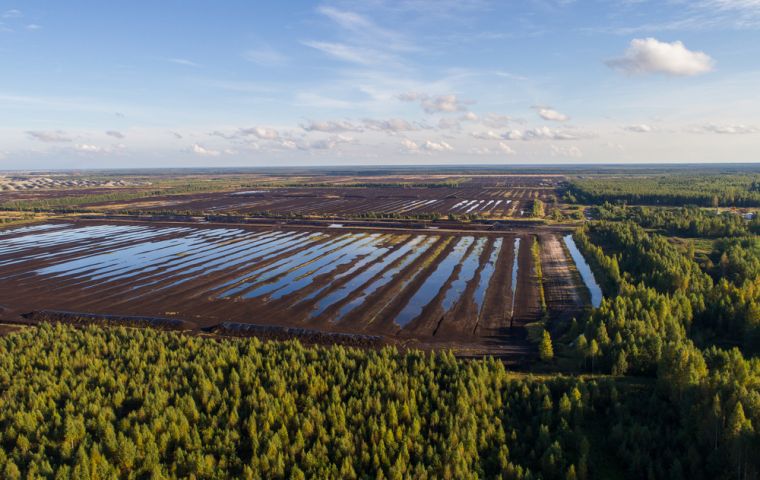MercoPress. South Atlantic News Agency
EU farmers refuse to accept plans to restore drained peat-lands, taken over by agriculture
 Globally, peat-lands take up some 3% of the planet's land area — and yet, they absorb nearly twice as much carbon dioxide as all the Earth's forests combined
Globally, peat-lands take up some 3% of the planet's land area — and yet, they absorb nearly twice as much carbon dioxide as all the Earth's forests combined European Union farmers and conservative lawmakers are up in arms against landmark nature legislation meant to bolster the bloc's green transition and prevent vital ecosystems and species from being wiped out due to climate change.
The Nature Restoration Law, first introduced by the European Commission in June 2022, has met political resistance over plans to restore drained peat-lands. If passed, the bill would allow for 30% of all former peat-lands currently exploited for agriculture to be restored and partially shifted to other use by the end of the decade, a figure rising to 70% by 2050.
But farmers' associations say they fear the widespread loss of valuable agricultural land. Supporters, meanwhile, see the new rules as crucial to meeting the EU's climate souls because peat-lands help slow planetary heating
Peat-land, a type of wetland, forms over thousands of years from the remains of dead plants, storing more carbon than any other ecosystem.
Globally, peat-lands take up some 3% of the planet's land area — and yet, they absorb nearly twice as much carbon dioxide as all the Earth's forests combined. But when damp peat-lands are drained and used for other purposes, like agriculture or fertilizer, they go from being a CO2sink to yet another potent source of greenhouse gas.
Across Europe, 7% of the continent's greenhouse gas emissions are the result of drained peat-lands and wetlands. That's nearly as much CO2 as the emissions produced by the EU's entire industrial output.
European peat-lands, full of nutrients and especially important for biodiversity, make up a patch of land roughly the size of Germany. More than half have suffered permanent damage. In Germany, the amount of degraded peat-lands is estimated to be as high as 90%.
Former peat-lands in Scandinavia and the Baltic states are mainly used for forestry. But in the Netherlands, Poland and Germany, large swathes of these drained areas are now farmland. Former peat-lands account for about 7% of Germany's agricultural land, and now generate 37% of all greenhouse gas emissions from agriculture.
Sophie Hirschelmann, an expert at the Greifswald Mire Centre, a research institute in northeastern Germany, said that when it comes to agriculture the continent needs a “paradigm shift” to meet the Paris climate goals. This means moving away from farming on drained peat-lands and investing in paludiculture — agriculture on rewetted peat soil. The latter would stop carbon emissions while improving soil and water quality.
In the EU's proposed legislation, rewetting has been planned for half the former peat-lands across Europe. For the other half, less effective measures would be used.




Top Comments
Disclaimer & comment rulesCommenting for this story is now closed.
If you have a Facebook account, become a fan and comment on our Facebook Page!